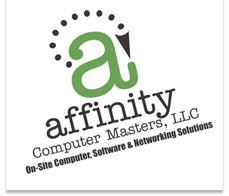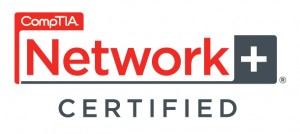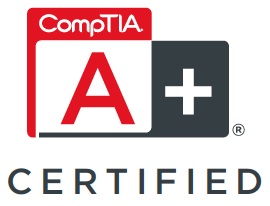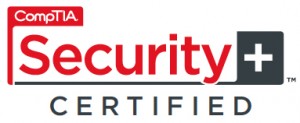This and That
Shopping For Viruses This Christmas more people a shopping on-line than ever before. The criminals of the Internet have their “presents” out there too. Remember to be safe. If a pop-up appears that is not one of your programs, tempts/frightens you to click a button or to hurry and get rid of the pop-up/window. DON’T! Don’t even move the window. Just shut off the computer. (Hold the off button for six seconds until it shuts down, if necessary.) You’ll have less problems with that than dealing with the viruses that are attacking now. Computer Floods You also may have noticed that computers are up in price. Be they Mac, Windows or Linux the hard disks that store your programs, pictures, word documents, etc. have risen in price from 150% to 300%. This is because of the recent flooding in Thailand. One of the largest manufacturers had it’s main factory submerged. All the vendors are attempting to fill the backlog. The shortages are expected to continue through most of 2012. Happy Birthday PC Dec. 19, 1974: The Altair 8800 microcomputer goes on sale… At its heart was the Intel 8080 microprocessor, with the remarkable capacity of 8 bits, or 1 byte. The kit offered a 256-byte memory, just about enough to contain one sentence of text. From Wired.com. What’s Hot The latest contender to Apple’s iPad is Amazon’s Kindle Fire. This $299 alternative is back in stock after an impressive launch. However, like the iPad, what can be loaded on it is restricted by the vendor. The Fire is more an e-reader than an e-tablet but certainly is more versatile than any previous reader. The Nook Tablet is another in this category. You can still get these for under the tree. What’s Cool A present from me to you. Here is a nice Christmas tree app for your android device. Scan this QR code. It will bring you to the download in the android market place. Questions? Ask at info@affinityCM.com or IM me at kurtrr on skype. Your question may be in an upcoming...
read moreThe Speed of a PC
How fast is your computer? “It’s good enough for me”, you may say or “Its too slow.” What is speed and what controls it? Just for fun let’s compare some computers. 2 gigaFLOPS for a normal home computer 8 gigaFLOPS for a powerful office computer 10,000 gigaFLOPS for the K supercomputer (5 million times faster than the home computer). FLOPS is a measure of how many calculations a computer can do in a second. The K computer is more commonly stated as running at 10 petaFLOPS (between peta- and giga- prefixes is tera- for one trillion). So what does this mean? Well, any good IT person will tell you it means almost nothing to us average Joes and Josaphines. There are many factors that go into how fast a computer will behave for what you are doing. The scientist working on combustion simulations for a new rocket nosel may need the K computer. But, using that same computer to do a term paper could cause it to use a lot more processing power than your home PC would. This is what many people find when they buy a PC. Lets say someone buys a PC that he thinks is fast: perhaps it has a big case, fast processor, lots of memory or hard disks space, what ever the feature is he keys on as making a computer fast. If that computer is not designed for his type of usage then for his usage the computer may be as slow as the one he previously had. Also the raw speed of the computer is less a factor than our perception and expectations for the speed of a computer. I once developed a program to help analysts in a factory. This program did the work of some other programs and tedious evaluation by the analysts. My program produced a result ready for the analyst to use in five minutes. During training the main question was why was my program so slow?! The perception was that my program had a big computer running it so that they should get results right away. The same goes for our computers. When we look at our phone, tablet and netbook computers we seem to expect performance in relation to their size. I see people patiently waiting for a response from their phone or tablet that would normally frustrate other people when they were on desktop PCs. Then there is the confusion of what is the PC and what is the network. I remember a person who was looking for a faster computer. The computer was several years old, in good condition, just old. This person bought a new PC about ten times faster and ten times larger in every category. It had plenty to match the expressed goals: some typing, email and browsing the web and some longevity. A couple of days later this person complained about how slow it was. A house call solved the problem. The computer was slow only when using the web browser. The location only had dial-up capability. The computer could take 100 times the speed that it was getting but the network couldn’t provide it. No mater how fast a computer is it can not force your cable or phone company to give you more data than for what you pay. Also, some people say their connection is slow even though they have high-speed Internet. They may be comparing their network to a neighbor’s. Not all high-speed connections are the same. If you have 1.5 mega-bits per second (Mbps) or even Kilo-bits you will not have the same performance...
read moreaffinity Computer Masters’ 10th anaversery
This is the celebration of affinity’s 10th annaversery. Come join us for refreshments and prizes. Come to our offices/shop at 721 S. Mustang Road, just 1/4 mile South of Reno Ave on the West side in Mustang Creek Plaza. The festivities will be held Wednesday, the 9th from 4:30 to 6:30. We’re looking forward to seeing you there. Kurt, Susan, Matt
read moreHidden PC Costs
Why does buying a PC cost so much more than what is listed in the ads? People get frustrated when buying a Personal Computer / Mac / Laptop when the price for the PC ends up so much more than what is listed on the sticker. What are these sometimes hidden costs and what needs to be factored in to find out how much it will really cost in the end? The price on the tag from the mass producers of PCs that you see on-line or on the store shelves is only for the hardware, either the Windows or Mac system and mostly superfluous software that advertise to you or extract information from you. The most confusing of these “free” or “preloaded” products are the office and Internet security products. Free software usually means that the product is available for you without loading it. In order to use it you give personal information via registration to a third party. The “preloaded” products are much the same. They merely ask to to buy the software right away. For the free and preloaded anti-virus and Office products eg. Word™ will stop working after a time. This either puts your computer at risk or holds what you have typed into the computer for ransom until you pay (or install something other product). The cost for these can be an additional $190 above the sticker price of the PC/Mac/Laptop. Don’t forget the protection from Oklahoma weather! Most people have outlets into which they plug their computer. They may be surge strips or just power strips with out any protection. Since surge strips’ protection tend to weaken over time and exposure to power problems it is a good idea to get new electrical protection when getting a new computer. For electrical protection in Oklahoma I recommend more than a surge strip. Many of our neighborhoods suffer from momentary blackouts and with Oklahoma storms often the power dips or browns-out. These dips can really take a toll on the PC hardware and can be disastrous for the system running the PC. A simple battery backup or UPS (Uninterpretable Power Source) fits the bill. These now can be had for little more than an adequate surge strip, about $60. Printers are a possible problem, too. With a new Windows or Mac system, often their software will not work with older printers. Let’s add $150 for a moderately low priced printer on a new system, though most will opt for better models. So far that has added $400 to the sticker price of your PC. Now there are optional items to get. You may want professional setup and updates. The first part is just setting up the PC: taking it out of the box and hooking up cables. Then following the tasks the manufacturer has set up for you, agreeing to all the terms to use the computer and choosing the options the programs offer. Also there are the recovery disks to be created when you first start your PC. Now connect to the Internet and do the Windows, Adobe, Java and other updates that have come out since the factory put together the system that is on your PC. These are needed to protect your computer from hackers. Now the computer can be personalized including setting up your mail and your printer. Don’t forget all those pictures and typing you did on your old computer. If you backed up your data, great. If not you may want to get that data recovered. Then there is restoring the back up or recovered data to the new...
read moreDumb Smart Phone
Believe it or not I only recently obtained a smart phone. My only justification for not getting one sooner is that my PDA was still working. That’s a “Personal Digital Assistant” for those of you who don’t remember back that long ago. Now we’ve heard of texting and driving being a problem and the teens can no longer legally do that. We’ve also heard of distracted driving. Well the smart phone definitely causes that. This article is a bit more personal than most but I think my experiences with technology are as per tenant as the next guys. I’ve always tried to not talk while driving. I’ve had a couple of close calls while driving and phoning with a regular cell phone and I’ve had difficulty in stopping that behavior. I attribute this to my using wireless phones before there were cell phones. Perhaps this is why teens may have difficulty in stopping their texting wile driving. They have been using, some from a young age, before they were driving and have become habituated to responding to the tone that indicates a text message has arrived. I began to look at my text messages while driving (not responding) but I found this also too distracting and have ceased doing that. I don’t think adults are any better at texting and driving than kids. Now my main purpose in writing this is not about texting. It is about using a smart phone. Just using it for phone calls can be challenging. And heaven forbid should you need to call a family member in an emergency. That can be an exercise in futility, especially with a new phone. As with any new technology it is created in such a way that it’s use is “obvious.” There are no manuals except for FCC notifications, advertisements from the company you bought it from and maybe how to put the battery in. I didn’t even know how to answer my first phone call on the darned thing. Answering calls and starting apps on the thing was quickly learned. The main trouble was calling numbers in my address book. It seemed to take half a dozen searches and clicks to get the phone to dial. In my fustration the phone almost became a dangerous projectile! I looked for an app to call a number with just one touch to no avail. Finally, I found out that I could simply create a link on the phone to call the number without picking from all the different options for making a call. So, what does this have to do with distracted driving? Well new-bee (noob) users will, like me, look like they are texting and be just as distracted if they are trying to use their phone (not texting) while they are driving. The take-home from this is don’t try to use your phone in the car especially if it is new to you. Texting is not the only problem with smart phones while driving. It is all the other things the phones can do that just seems plain dumb when you only want to make a call. Stop distracted driving! Questions? Ask at info@affinityCM.com or IM me at kurtrr on skype. Your question may be in an upcoming blog/column. Image: scottchan /...
read more





Follow Us!